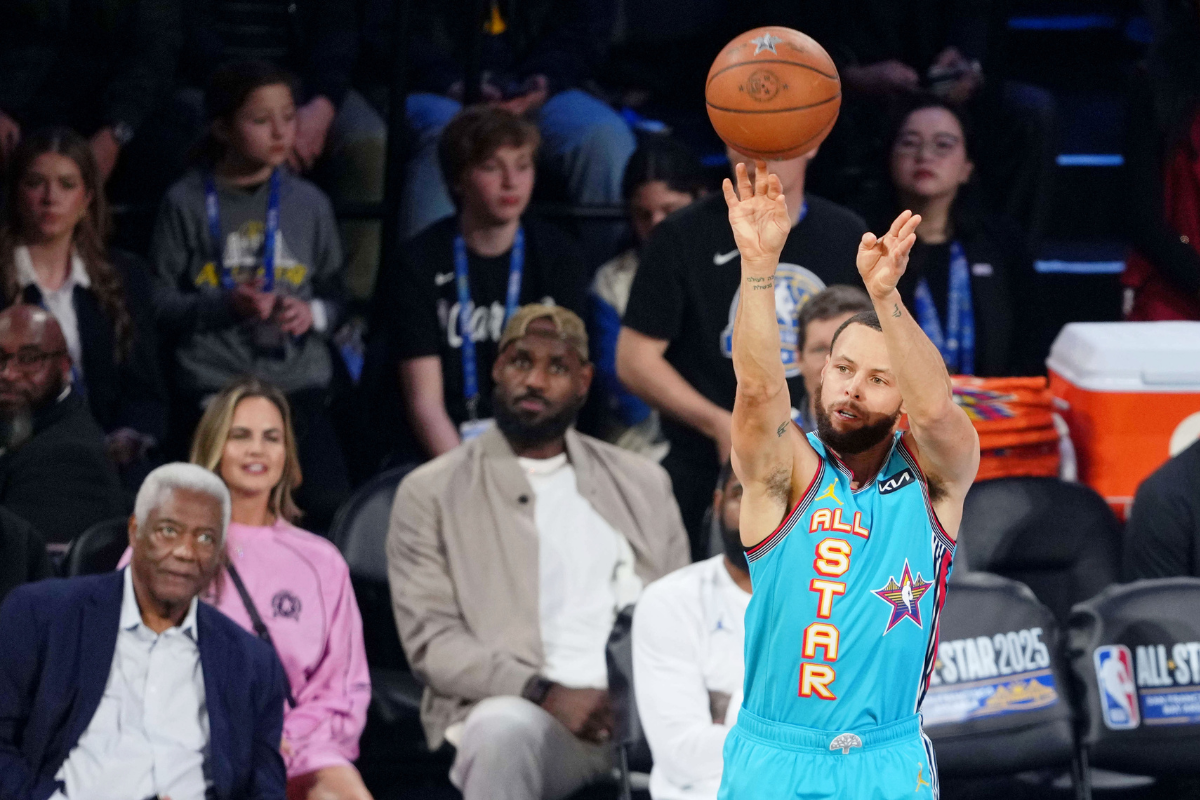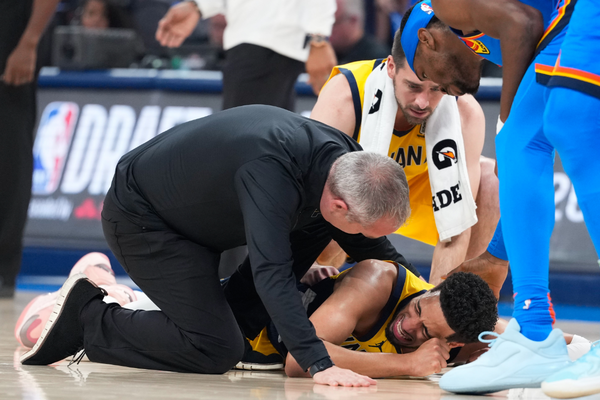
Imago
Feb 16, 2025; San Francisco, CA, USA; Shaqs OGs guard Stephen Curry (30) of the Golden State Warriors shoots the ball as forward LeBron James (center) of the Los Angeles Lakers and former NBA player Oscar Robertson (left) watch during the 2025 NBA All Star Game at Chase Center. Mandatory Credit: Darren Yamashita-Imagn Images

Imago
Feb 16, 2025; San Francisco, CA, USA; Shaqs OGs guard Stephen Curry (30) of the Golden State Warriors shoots the ball as forward LeBron James (center) of the Los Angeles Lakers and former NBA player Oscar Robertson (left) watch during the 2025 NBA All Star Game at Chase Center. Mandatory Credit: Darren Yamashita-Imagn Images
The NBA today barely resembles the league from 20 years ago—and that’s not just nostalgia talking. We’re in an era where algorithms shape lineups, wearables monitor muscle fatigue, and deep data dives determine which player closes out the fourth quarter. The shift didn’t happen overnight, but a few key catalysts flipped the script. One was the explosion of advanced analytics. The other? A baby-faced assassin from Golden State who proved beyond doubt that three really is more than two.
Watch What’s Trending Now!
Stephen Curry didn’t just change the game—he bent it. As his deep-range dominance redefined offensive spacing, teams had no choice but to follow suit or get left behind. The result? A league where floor spacing, shot selection, and efficiency metrics drive every coaching decision. But that was just the start.
Now, artificial intelligence is supercharging the revolution. From predictive injury models to AI-powered scouting reports, technology is pushing the boundaries of what’s possible on and off the court. Teams are experimenting with generative AI to simulate plays, automate film breakdowns, and even model fan behavior to optimize the arena experience.
ADVERTISEMENT
In short, it’s not just a basketball game anymore—it’s a data-driven ecosystem. And just like the three-point revolution, this next wave isn’t optional.
How AI is revolutionizing player performance
Thanks to artificial intelligence, it has never been easier for NBA players to identify their weaknesses and find the best methods to improve them. With advanced systems like Noah Basketball, a data provider that uses machine learning and latest computer-vision tech, players get real time data and feedback about their every move. From their wrist flick to shot arc to body alignment, it tracks everything, helping players refine their shooting mechanics. Per Noah Basketball’s website, 28 NBA teams use their service.
ADVERTISEMENT
Similar systems are used to improve players’ dribbling, passing, and other key attributes. If that wasn’t enough, there are even methods to conduct practices at game speed. Earlier this year, Warriors installed Automated Basketball Engine robots. Its ability to map the court in real time and mimic game like passes at customizable speed helped Stephen Curry and Co. have more efficient practice sessions. “They just become part of the day to day… They don’t take breaks. They don’t need water. Makes you wanna go harder.” Steph remarked.
View this post on Instagram
ADVERTISEMENT
Meanwhile, Warriors staff, that usually spent significant time rebounding and passing, could now focus on video analysis and strategy. Seems like that’s the future for every team, as AI has clearly made players’ lives better. More importantly, it is subtly helping elongate their careers by preventing injuries.
Top Stories
Respect Pours In for Shaquille O’Neal, Charles Barkley After $200,000 Announcement

Caitlin Clark Announces Final Decision on Project B, Addresses Lockout Stance in CBA Talks

Victor Wembanyama Doesn’t Hold Back Against Shai Gilgeous-Alexander After Spurs-Thunder NBA Cup Semi-Finals

Lakers’ Gabe Vincent Dishes on LeBron James, Luka Doncic’s Sacrifices, Role on the Team and More (Exclusive)

Are Giannis Antetokounmpo, Michael Porter Jr Playing Tonight? Bucks vs. Nets Latest Injury Report (Dec 14)

How AI is helping NBA with injury management
Well, there was a time when an Achilles tear marked the end of a player’s career. Even if they managed to recover, they would return as a mere shell of themselves on the court. But not anymore. Players like Kevin Durant have proven that it is possible to return from serious injuries in All-Star form. With Achilles injuries becoming more frequent, the role of AI has become more important than ever.
ADVERTISEMENT
After superstars like Tyrese Haliburton, Damian Lillard, and Jayson Tatum suffered the same injury this season, Adam Silver said, “I’m hopeful that by looking at more data, by looking at patterns, this is one area where A.I… the ability with A.I. to ingest all video of every game a player’s played in to see if you can detect some pattern that we didn’t realize that leads to an Achilles injury. We’re taking it very seriously.” Hopefully, AI will help avoid such injuries in the future.

Imago
Jun 22, 2025; Oklahoma City, Oklahoma, USA; Indiana Pacers guard Tyrese Haliburton (0) reacts after suffering an injury during the first quarter against the Oklahoma City Thunder during game seven of the 2025 NBA Finals at Paycom Center. Mandatory Credit: Kyle Terada-Imagn Images
Sure enough, there are already systems in place that analyze players’ workload, fatigue, injury history to assess possible risk of any future health concern. By tracking factors like heart rate and muscle strain, these systems immediately alert the player when there is something out of the ordinary. Earlier this year, the league reportedly partnered with John Hopkins and MIT to build advanced models on Achilles integrity.
ADVERTISEMENT
Of course, lesser injuries would mean longer careers. A big reason why LeBron James is still elite at 40-years-old is because he has never suffered a major injury. Although he is a genetic anomaly and has been doing it since an era when technology was not prominent, most players need AI assistance to increase their longevity. Not only the players, but even teams are benefiting from this revolution.
How AI is helping NBA teams strategize and build roster
Unlike the past, where most players were recruited after passing the eye test by experienced scouts, NBA teams today are relying heavily on AI to build their roster. As the game continues to go global, it’s become extremely difficult to assess every promising prospect around the world. But AI makes the job much easier. Thanks to the latest technology, every player’s data from the moment they picked up a basketball can be tracked and analyzed based on the team’s current requirements.
ADVERTISEMENT
The Orlando Magic have been using AutoSTATS platform to enhance their scouting process since 2019. It analyses playing style, statistics, and injury history of every draft prospect, cutting down the human review time significantly. “When we saw the power of AutoSTATS, we were immediately drawn to the benefits this data can provide in our draft decision-making process.” Jeff Weltman, Magic’s President of Basketball Operations said in an interview.
Similar systems can also be used to make trades and assess free agents. Even on the hardwood, AI helps analyze player tendencies, defensive matchups, and shot success rates to recommend high percentage plays. It helps the coaching staff strategize against specific players and teams to get an edge in high stake games.
Moreover, AI is also making officials’ lives easier. Its not uncommon for them to make mistakes, especially during intense playoff games. After all, they are only human. So, league installed Sony’s Hawk-Eye cameras to capture every minute detail that can be used to make the right call.
ADVERTISEMENT
It proved pivotal in the Nuggets vs Clippers series, when Hawk-Eye gave a frame-by-frame analysis of Aaron Gordon’s game-winning alley-oop. Its precision confirmed that the ball left AG’s hands milliseconds before the buzzer turned red, making it a legal basket. The same thing happened during the Lakers vs Timberwolves Game 4 when a late foul call was overturned on LeBron.

ADVERTISEMENT
Turns out, Hawk-Eye’s usage cut down officials’ deliberation time from 135 seconds pre 2024 to 70 seconds this postseason. That’s a 48% improvement.

Per digitaldefynd, “League analytics pegged call accuracy at 98.4 % and logged 14 million interactive replay views in the NBA App, lifting fan engagement by 22 % during the entire postseason.” AI’s impact is undeniable. And arguably the most important aspect of the game that it has transformed is fan experience.
How AI has transformed NBA’s fan experience
Gone are the days when every fan at home stared at the same television set, watched the same broadcast, and had the same viewing experience. With AI, today’s game watching experience is far more personal and curated. Based on your interests and preferences, your device adjusts the NBA to how you want to watch it. By partnering with Microsoft, the league continues to build a generative AI experience for fans using Azure OpenAI.
“By harnessing the computational power of Azure, NBA Insights delivers detailed analysis for every aspect of the game. We’re taking the experience even further by integrating historical context and real-time sources. Providing a comprehensive view, grounded in existing and emerging data, helps us serve up meaningful information to fans following the action in the NBA App.” Ian Allen, NBA’s senior software engineer of AI remarked.
Taking it a step further, NBA has also introduced augmented and virtual reality viewing experiences, where players can enjoy the feeling of sitting courtside in the comfort of their homes. And if you are a betting enthusiast, AI takes care of that as well by giving you real time data and betting options.
Fans’ obsession with data and getting more information is one of the reasons teams are investing billions in their arenas. Steve Ballmer’s $2 billion dream project, Intuit Dome, prioritized fans’ game watching experience and installed giant state of the art jumbotrons to highlight every detail.
As AI’s influence grows stronger, NBA will continue to implement it in its evolution. And who knows what the league will look like ten years later. What are your thoughts?
ADVERTISEMENT
ADVERTISEMENT
ADVERTISEMENT

